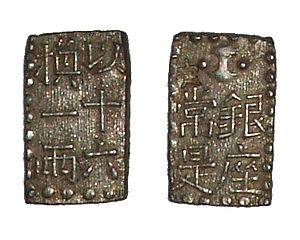Bunsei facts for kids
The Bunsei (文政) period was a special way of counting years in Japan. It was an era that came after the Bunka period and before the Tenpō period. This time in Japanese history started in April 1818 and ended in December 1830. During these years, the emperor of Japan was Emperor Ninkō.
What Happened During the Bunsei Era?
The Bunsei era saw some interesting events:
- 1822 (Bunsei 5): The city of Edo (which is now Tokyo) experienced many earthquakes. There were about 150 small shakings over three days!
- 11 August 1823 (Bunsei 6): A German scientist named Philipp Franz von Siebold arrived in Japan. He was a taxonomist, which means he studied and classified plants and animals. He came to Dejima, a small island in Nagasaki harbor, to work as a doctor for the Dutch trading post there.
- 13 August 1830 (Bunsei 13): Another earthquake hit the city of Kyoto. We don't know how strong it was on the Richter scale, but it was a notable event.
Explore More About Japan's History
- Edo period
- You can learn more about the Japanese calendar and its history by visiting the National Diet Library's website: The Japanese Calendar.
See also
 In Spanish: Bunsei para niños
In Spanish: Bunsei para niños

All content from Kiddle encyclopedia articles (including the article images and facts) can be freely used under Attribution-ShareAlike license, unless stated otherwise. Cite this article:
Bunsei Facts for Kids. Kiddle Encyclopedia.

